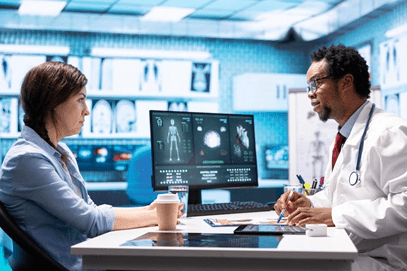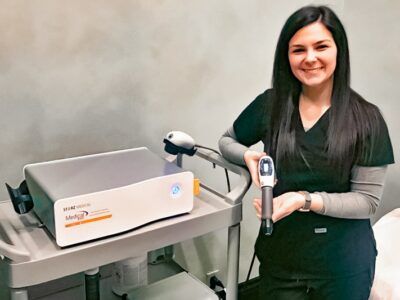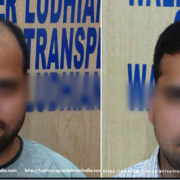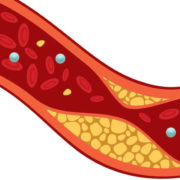Understanding Preventive Cardiology
Preventive cardiology plays a crucial role in heart health by focusing on reducing the risk of cardiovascular disease before symptoms arise. Through lifestyle changes, routine screenings, and targeted interventions, it aims to manage risk factors early and promote long-term wellness. This proactive approach considers genetics, lifestyle, and existing conditions to prevent chronic heart issues. As the field evolves, advances in technology, particularly in imaging, offer deeper insights, enabling earlier and more accurate detection of heart disease.
Preventive Cardiovascular Care Through Advanced Imaging
Preventive cardiovascular care is significantly strengthened by advanced imaging, which provides a deeper understanding of heart health. These technologies offer detailed insights into the heart’s structure and function, allowing us to detect potential issues with greater precision. Far more than diagnostic tools, advanced imaging methods are essential in developing personalized strategies to reduce risk and support long-term heart health. They reveal critical details such as arterial plaque, heart muscle condition, and vulnerable areas, empowering clinicians to create targeted care plans.
By incorporating advanced imaging into routine evaluations, we ensure a continuous and proactive approach to heart health. This ongoing assessment helps guide timely interventions and lifestyle changes, forming the foundation of effective, personalized preventive cardiovascular care. Regular use of advanced imaging facilitates early detection of subtle abnormalities that may not present with symptoms, enabling earlier, more effective intervention. As a result, patients benefit from improved outcomes, reduced risk of major cardiac events, and a clearer path toward maintaining lifelong cardiovascular wellness.
Benefits Of Advanced Imaging In Preventive Cardiology
The benefits of advanced imaging in preventive cardiology are manifold. First and foremost, these techniques enhance early detection of potential heart issues, allowing us to intervene before they progress into serious conditions. This proactive approach not only improves patient outcomes but also reduces the necessity for invasive procedures.
Advanced imaging also plays a significant role in risk stratification. By providing detailed information about the heart and vascular system, these techniques help us categorize patients based on their risk levels. This stratification is essential for tailoring preventive measures, ensuring that individuals receive the precise care they need, whether it be lifestyle modifications, medication, or more frequent monitoring.
Furthermore, the detailed insights gained from advanced imaging empower us to educate patients about their heart health. By visualizing their cardiovascular condition, patients are often more motivated to adhere to recommended lifestyle changes and treatments. This visual component fosters a deeper understanding and commitment to maintaining good heart health.
In addition to these benefits, advanced imaging supports personalized medicine. The precision and clarity offered by these technologies enable cardiologists to design individualized care plans based on a patient’s unique anatomy and health profile. This leads to more targeted therapies and a higher likelihood of long-term success.
Lastly, as technology evolves, imaging methods continue to become safer, faster, and more accessible, making them an invaluable tool in routine cardiovascular assessments and long-term health planning.
Integrating Advanced Imaging Into Patient Care
Integrating advanced cardiac imaging into patient care is more than just using technology—it’s about taking a coordinated, thoughtful approach to heart health. It starts with understanding the patient’s medical history and current condition. When we combine that with the powerful insights advanced imaging provides, we can design care plans that address not only present concerns but also help prevent future issues.
Collaboration is key. Cardiologists, radiologists, and primary care providers must work together to interpret imaging results and create well-rounded, personalized treatment strategies. This team-based approach ensures every aspect of a patient’s cardiovascular health is considered, leading to more effective and comprehensive care.
To make the most of advanced cardiac imaging, access must be smooth and timely. When seamlessly integrated into routine heart health check-ups, this technology allows for earlier detection, quicker interventions, and stronger prevention. It not only enhances outcomes—it helps make the best use of healthcare resources.
Conclusion: The Impact Of Advanced Imaging On Preventive Cardiology
In conclusion, advanced imaging has transformed the landscape of preventive cardiology. By providing detailed, accurate insights into the heart’s health, these technologies enable us to identify and address potential issues before they develop into significant problems. This proactive approach is at the heart of preventive cardiology, where the focus is on maintaining long-term heart health rather than reacting to diseases after they occur.
The impact of advanced imaging extends beyond individual patient care. It also contributes to broader public health by reducing the incidence and severity of cardiovascular diseases. As we continue to refine these technologies and integrate them into standard practice, we can anticipate even greater improvements in heart health outcomes.
For those concerned about their heart health, I encourage you to discuss the possibilities of advanced imaging with your healthcare provider. Early detection and prevention are key to maintaining a healthy heart, and these cutting-edge techniques can offer the clarity and confidence needed to make informed decisions about your cardiovascular care.













Comments